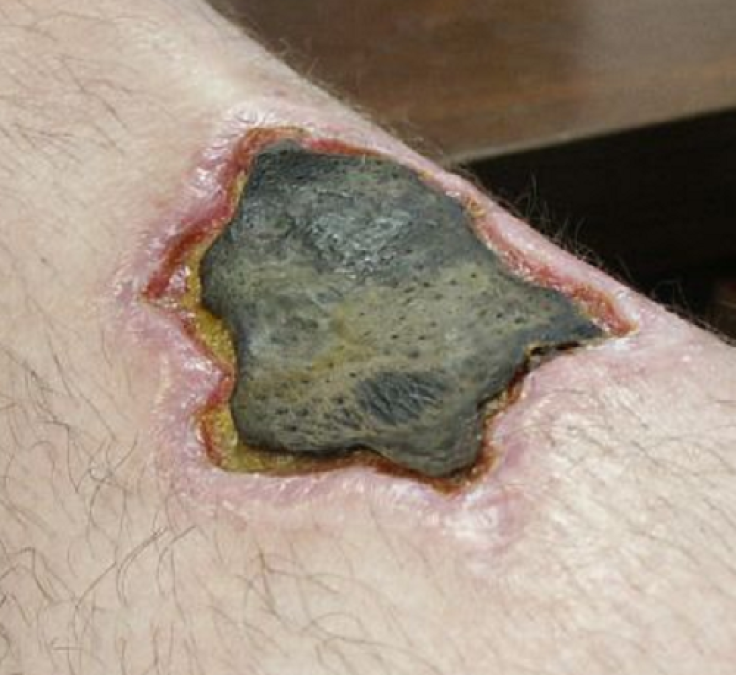Krokodil, Flesh-Eating Drug, Appears In Illinois; Three Women Undergoing Treatment For Gangrene

Late last month, an Arizona poison control center announced the first two cases of Krokodil use in the U.S. Now, the flesh-eating, skin discoloring, and deadly drug has made its way to Illinois, where three cases were reported this week.
The three krokodil users were being treated at Presence St. Joseph’s Medical Center in Joliet, Illinois — a part of Will County. Krokodil, also known as desomorphine, is made from the opioid, codeine, and mixed with hydrocarbons such as oil, alcohol, or gasoline, along with a number of other flammable ingredients. It causes blood vessels to burst, green scaly skin (like a crocodile), and tissue to rot from the inside out, starting from the point of injection.
“If you want to kill yourself, this is the way to do it,” Dr. Abhin Singala, director of addiction services at St. Joseph’s, told the Chicago-Sun Times.
The drug, which is originally from Russia, is used as a substitute for heroin because it gives users a similar high, is up to 10 times cheaper, and is easy enough to make at home. Many of the terrifying effects of the drug come from would-be chemists’ inability to extract all of the damaging ingredients after they boil the mixture. Therefore, they begin to kill tissue, which can lead to life-threatening infections. The average life expectancy of a user is less than two years.
The patients, three women under 25 years old, and two of whom are acquainted, sought treatment due to “significant maiming” from gangrene in their arms and legs, Dr. Singala said. “It’s a horrific way to get sick. The smell of rotten flesh permeates the room. Intensive treatment and skin grafts are required, but they often are not enough to save limbs or lives,” Dr. Singala said in a news release, according to the Joliet Patch. He also said it may take years for one of them to be able to walk again. (You can see gruesome photos of what krokodil does here)
Krokodil addiction rates saw dramatic increases in Russia leading up to 2011. Between 2009 and 2011, over 2.5 million addicts sought treatment, and in 2011 alone, as many as 65 million doses of the drug were seized by Russia’s Federal Drug Control Service. The rise of krokodil use has been attributed to shortages in heroin. Now it seems that the drug is showing up in increasing numbers in the U.S. as well.
A recent report found that overall drug availability has increased. Based on drug seizures, there was a 29 percent higher rate of heroin seizures in 2009 than 10 years before. So if heroin availability is rising, why are people turning to krokodil? Dr. Singala said in the news release that “Will County’s already burgeoning heroin epidemic may have created a tolerance level to the point where users are now looking for cheaper and better highs.”



























